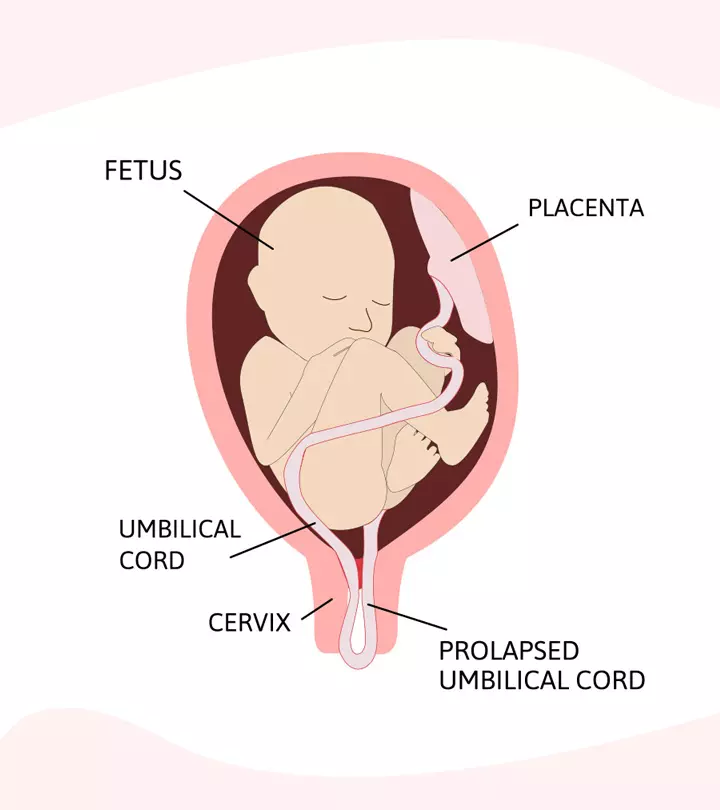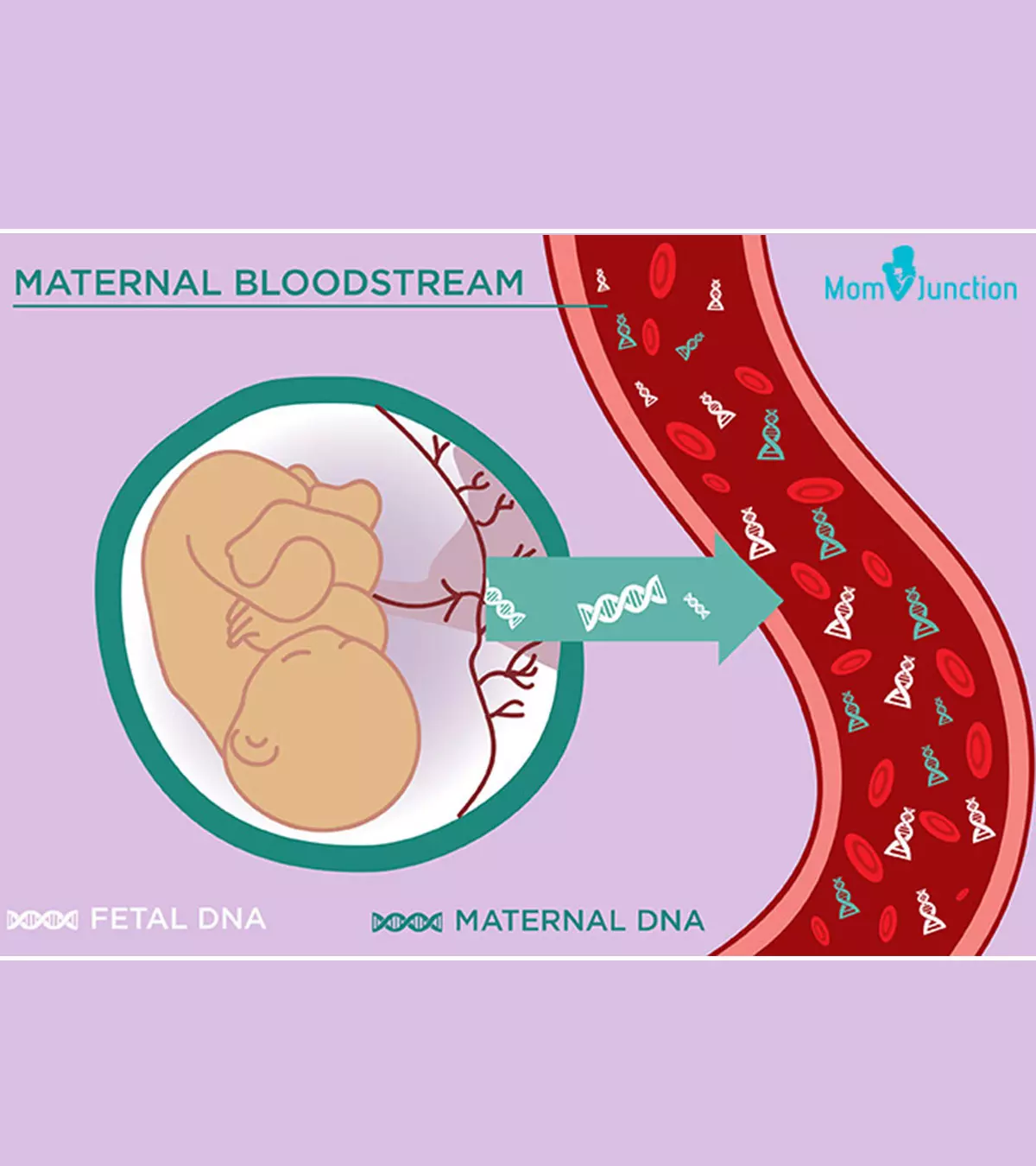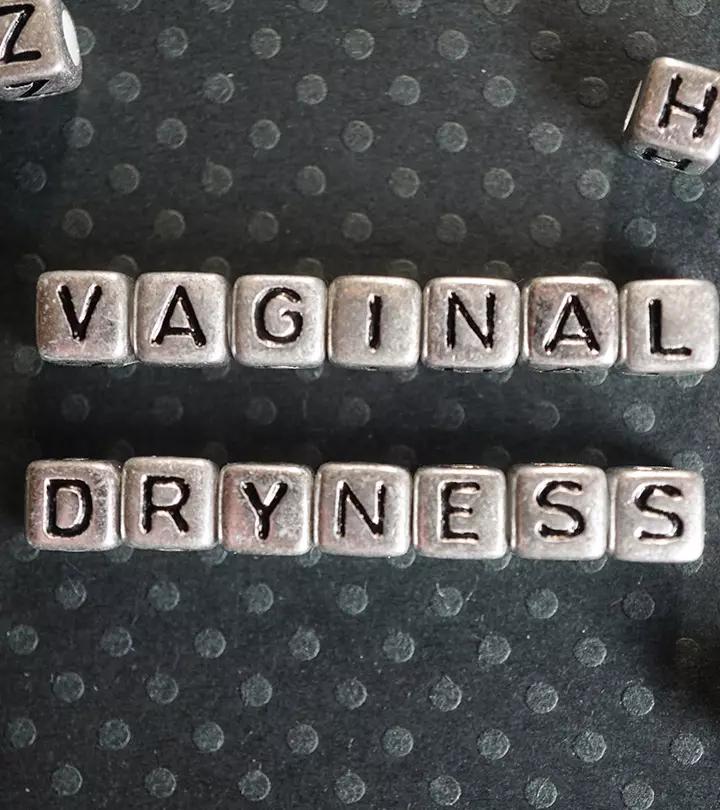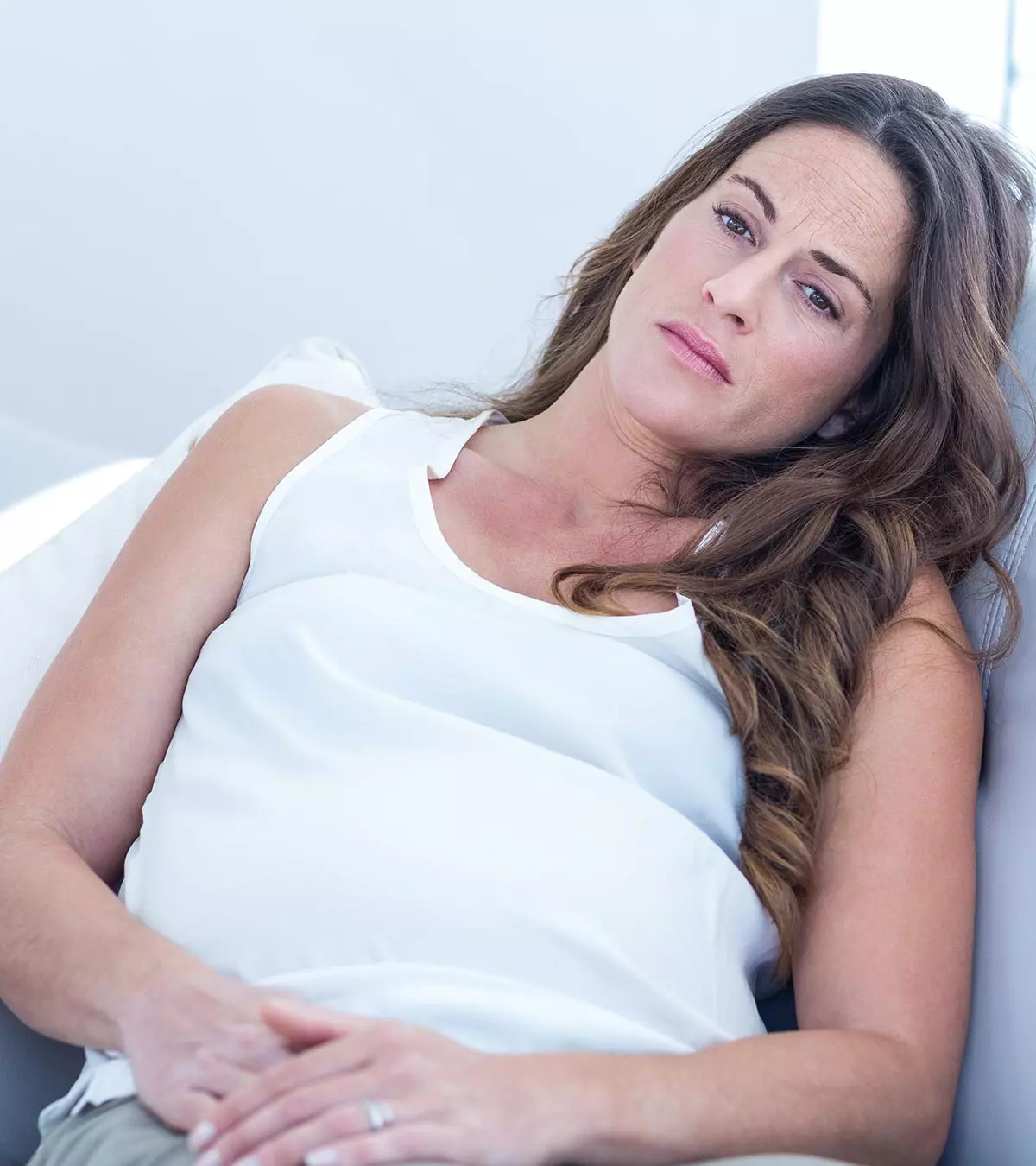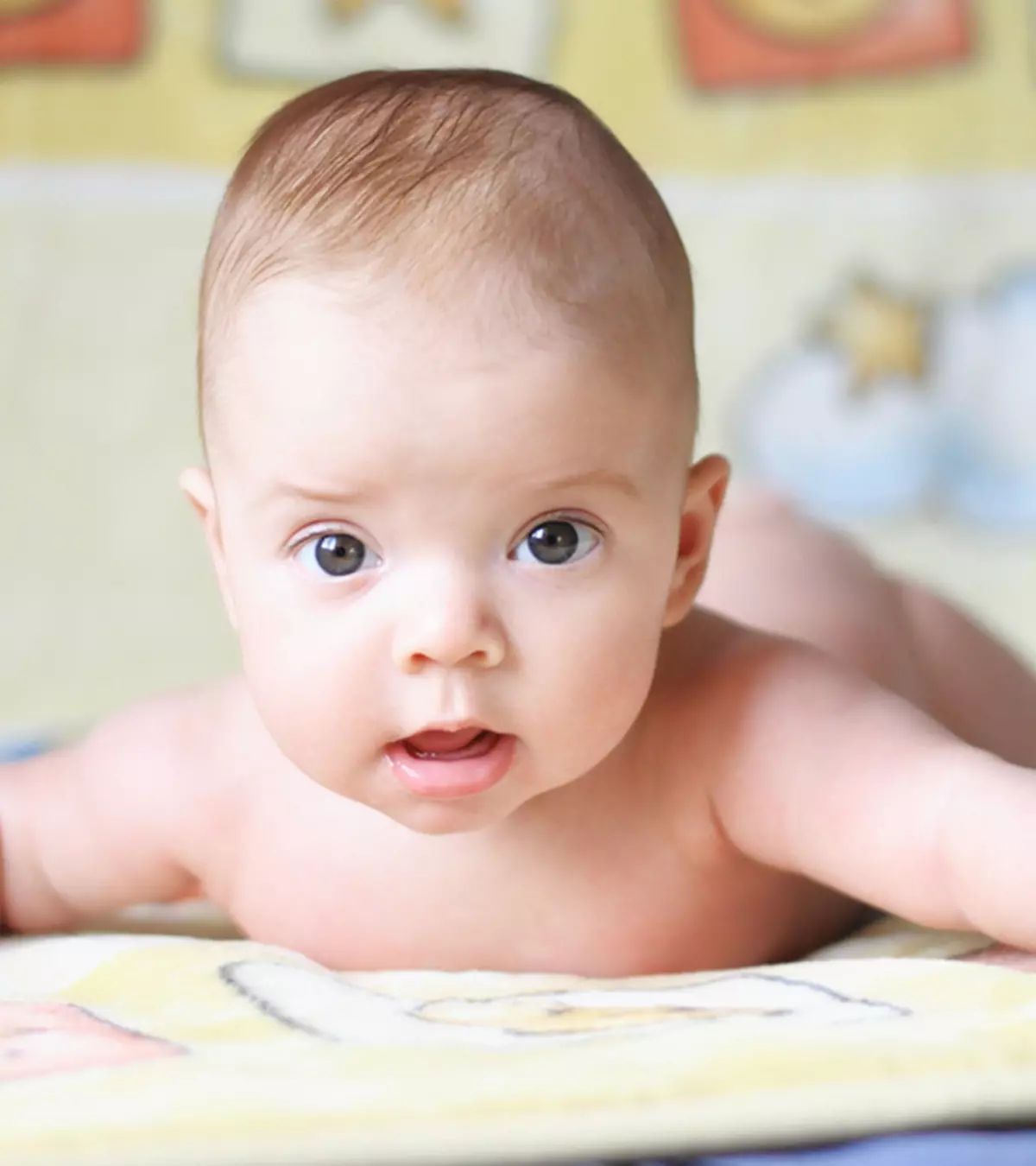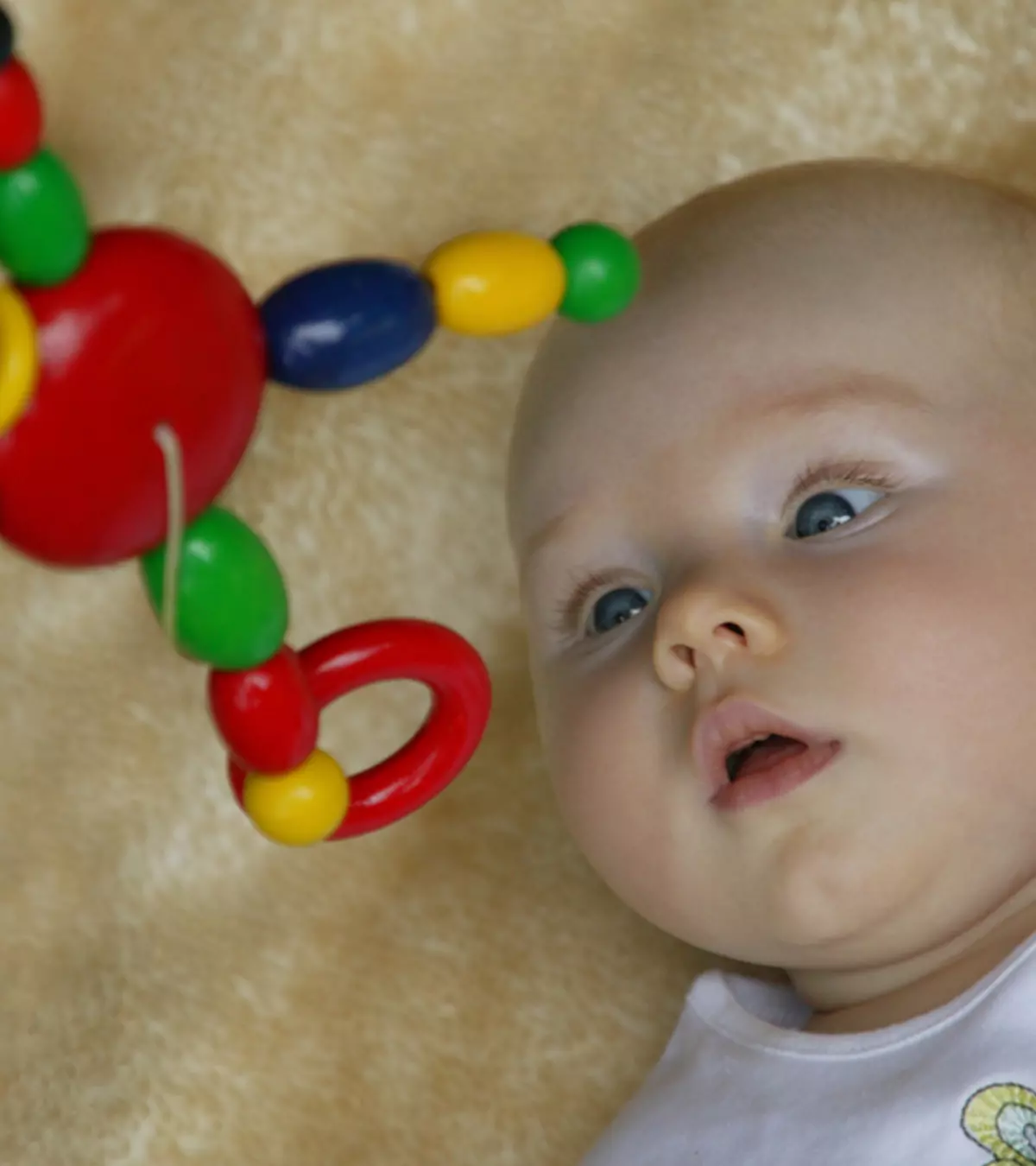
Image: Midjourney/ MomJunction Design Team
Petechiae in babies can occur due to self-limiting conditions (such as birth trauma) and bleeding disorders that require prompt medical care. They are tiny, flat, red spots up to two millimeters in diameter. You may notice petechiae on the skin and mucous membrane of the baby (1) (2).Petechiae is not a disease, so you may seek a doctor’s consultation to find the underlying causes.

Read on about the causes, associated symptoms, diagnosis, and treatment for petechiae in babies and ways to prevent them.
Key Pointers
- Petechiae, which are tiny, flat, red spots that can appear on neonates, are caused by birth trauma and bleeding issues, and require immediate medical attention.
- Petechiae develop when capillaries, which are tiny blood vessels beneath the skin, bleed into the skin.
- There are various reasons why babies may experience capillary bleeding, including coughing fits, vomiting, tourniquet pressure from diapers or baby carriers, bacterial or viral infections, sepsis (blood infections), platelet malfunction, coagulation issues, trauma, skin allergies, and others.
- Different treatments may be necessary for petechiae depending on the underlying cause. For example, petechiae caused by bacterial infections will require antibiotic treatment, whereas those caused by coagulation issues will require anticoagulants and other drugs.
Causes Of Petechiae In Babies
Newborns may have petechiae on the skin due to birth trauma caused by vaginal delivery. It may be a little bit bigger than petechiae, even a bruise. This usually disappears within a week or two without medications.
Dr. Sharon Wiener, a board-certified pediatrician from Plano, Texas, says, “Physical trauma, such as a hard bout of coughing, breath-holding, vomiting, or crying, can cause facial petechiae. This occurs mostly around the eyes. With a more serious problem such as a bacterial or viral illness, the petechiae are generally on the torso, extremities, and buttocks and are related to other symptoms such as fever and extreme fatigue.”
Petechiae occur when the small blood vessels under the skin (capillaries) bleed into the skin. Capillary Hemorrhage in babies can occur due to many reasons, including (3):
- Coughing bouts
- Several instances of vomiting
- Tourniquet pressure such as from wearing a diaper or baby sling
- Bacterial infections such as meningococcemiaiA serious infection resulting in fever, skin rash, and lesions , endocarditisiInflammation of the inner lining of the heart caused by an infection , scarlet fever, etc
- Viral infections ranging from viral hemorrhagiciA medical term for bleeding fevers to cytomegalovirus (CMV) infection and mononucleosis in babies.
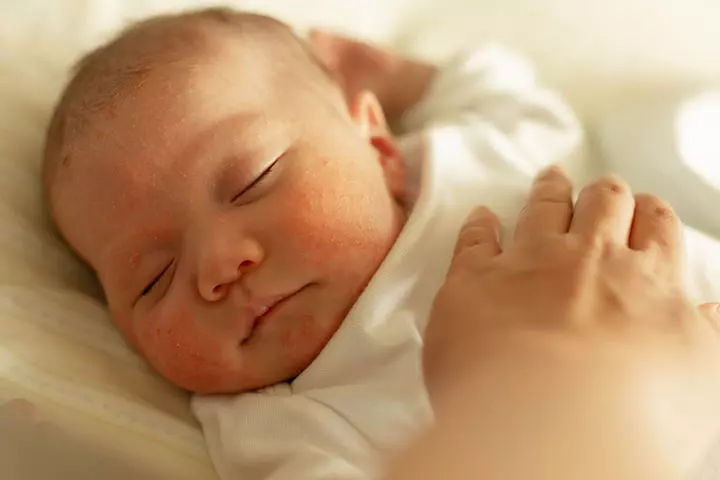
- Sepsis (Blood infections)
- Fungal infections
- LeukemiaiA cancer of blood cells that affects the body’s immune system
- Hypersplenism (overactive spleen)
- Thrombocytopenia (low number of platelets)
- Platelet dysfunction and coagulationiTransformation of blood from a liquid state to a solid or semi-solid state disorders
- Scurvy (vitamin C deficiency)
- Vitamin K deficiency
- Dysproteinemia (blood protein content disorder)
- Certain medications such as penicillin, Qualaquin (quinine), or Cerebyx (phenytoin)
- Sunburn
- VasculitisiInflammation of blood vessels causing restricted blood flow and clots.
- Child abuse in the form of smothering, biting, strangulation or spanking
- Trauma
- Skin allergies, such as atopic dermatitis
Amanda, a loving mom of two children from Texas, recalls talking to their pediatrician about her baby boy’s petechiae. She says, “She (the doctor) pulled up a chair and pulled out our chart and began explaining to us that our perfect little boy wasn’t actually perfect. He was covered in red spots (well, yeah, we noticed them right away, but it’s just from coming through the birth canal, right?) No, those red spots are called petechiae and are caused by the lack of platelets in his blood (known as thrombocytopenia) (i).”
Furthermore, certain risk factors can increase the likelihood of developing petechiae in babies, including a family history of bleeding disorders, certain infections, and conditions that affect platelet function. Parents should be vigilant about these factors and discuss them with their pediatricians.
Symptoms Of Petechiae In Babies
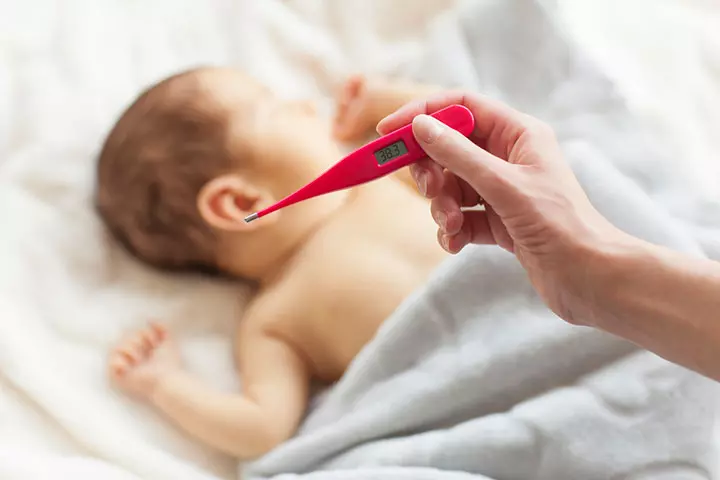
The primary symptom of infantile petechiae is the appearance of pinprick sized red spots under the skin. These spots can also be purple or brown in color and often appear in clusters that look like skin rash. The spots are flat and don’t itch or blanch (turn pale) when you press them. Petechiae often appear on children’s faces, arms, stomach, chest, buttocks, and feet.
You may notice other signs and symptoms along with petechiae, depending on the underlying cause. Fever is the most common associated symptom seen in many infectious and noninfectious underlying causes.
 Quick fact
Quick factWhen To See A Doctor
It is recommended to seek immediate medical care if your baby has petechial rashes since it can be a symptom of a severe medical condition or can be another type of rash. For instance, purpura rashes are also non-blanching on pressure tests, like petechiae, but are due to meningococcal septicemiaiSpread of bacterial infection into the bloodstream that requires emergency care (4).
Seek immediate medical attention for the following, even though your baby is undergoing treatment for childhood petechiae.
- High fever (more than 100.4°F)
- Unexplained bruises on infants
- Lethargy
- Abnormal pulse
- Increase in the size of the spots
 Quick tip
Quick tipDiagnosis Of Petechiae In Babies
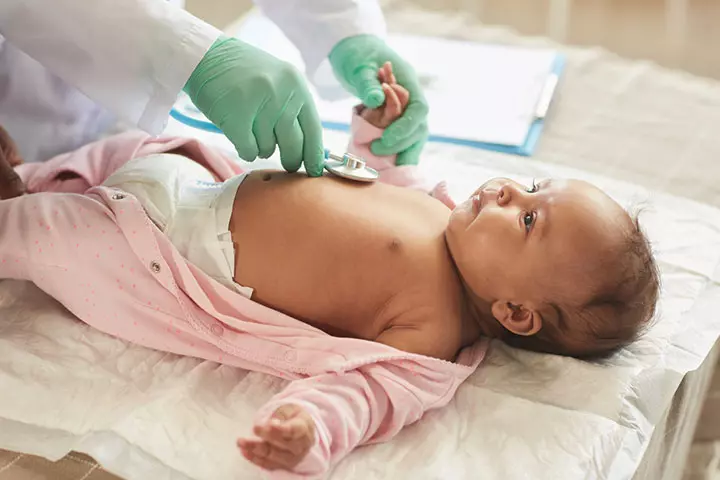
Petechiae spots are usually recognizable due to their characteristic size and color. The doctor may also perform a glass test or pressure test using a glass to confirm the diagnosis. Petechial spots do not become colorless (pale) while applying pressure on it.
The doctor may order blood tests, urine tests, throat swab, imaging tests such as X-ray, or a lumbar puncture to confirm the cause of petechiae (5) (2). A comprehensive medical history and physical examination are essential for identifying potential underlying causes of petechiae, as they can provide context and clues that guide further testing and treatment. Most of these tests are often ordered based on the results of initial blood tests and the presenting signs and symptoms.
Treatment For Petechiae In Babies
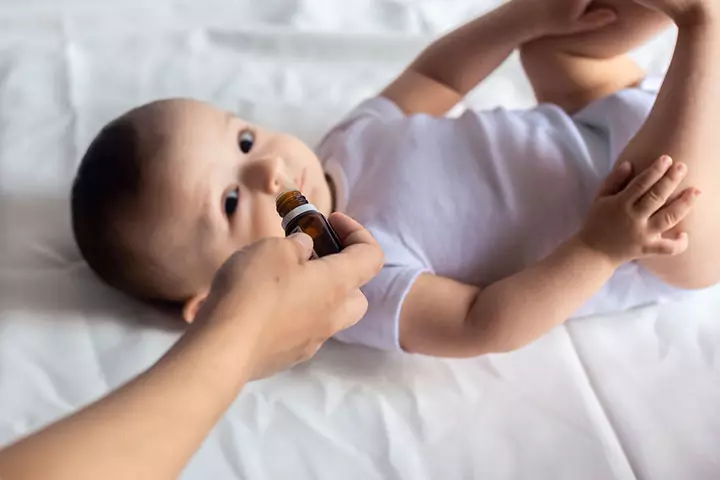
Treatment for petechiae may vary depending on the underlying cause. Petechiae due to bacterial infections will require antibiotic treatment, while petechiae due to coagulation disorders will require anticoagulants and other medications. For instance, if petechiae are due to thrombocytopenia, treatment may include platelet transfusions, while viral infections might require supportive care and monitoring. The treatment approach must be tailored to each child’s specific diagnosis and health needs.
If there are no other concerning symptoms or causes, there is no requirement of treatment. Nevertheless, medical intervention for petechiae is necessary to determine the underlying cause (6). Any delay in diagnosing a severe causative illness may lead to fatal results.
After initial consultation for petechiae, follow any treatment plan the doctor suggests. Petechiae usually fade away without leaving any scars. Keep monitoring the spots for any changes in their numbers or color. If you notice any changes in petechiae spots, inform the doctor about it.
 Quick tip
Quick tipPrevention Of Petechiae In Babies
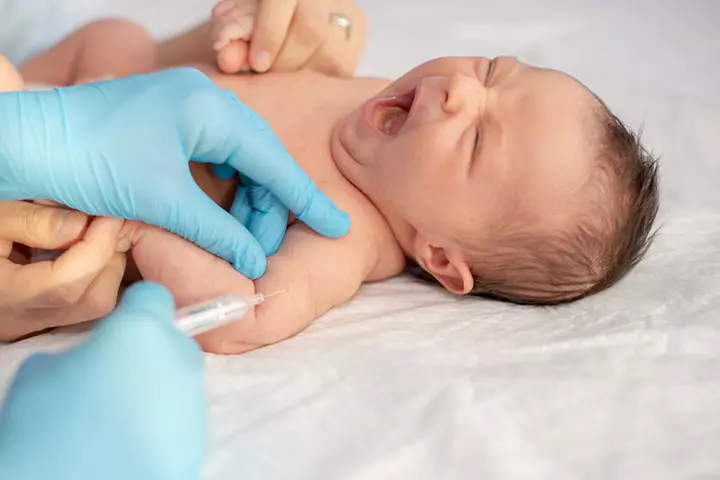
There is no vaccine available for petechiae in newborns. Since the cause of petechiae can be any medical condition, you may vaccinate your child for a specific disease. For instance, you can give your child the Hib vaccine for meningitisiInflammation affecting the protective membrane of the brain and the spinal cord .
You can also take care of their diet to prevent petechiae from diseases like scurvy. Scurvy occurs due to vitamin C deficiency, so ask your doctor for diet suggestions before your baby is old enough (four to six months) to consume solid foods.
If your baby spends time in childcare (daycare) centers or you have hired help for childcare when you have to be away from home, make sure there are no chances of physical abuse in your absence that may be causing petechiae on the baby’s body.
Frequently Asked Questions
1. Can babies get petechiae for no reason?
Sometimes, the reason for a baby’s petechiae rash is not well-known, and it is likely to appear due to infections and other medical illnesses (7).
2. How common are petechiae in babies?
Petechiae rashes are common in babies. However, if your baby has a petechial rash along with fever, you should take them to a pediatrician.
3. How long do petechiae last?
In most cases, petechiae survive for a few days and resolve spontaneously. However, the petechiae rash depends on the underlying cause and severity of the condition. If left untreated, they could last longer and spread to the entire body (5).
4. Can teething cause petechiae?
Dr. Wiener opines, “No, a teething rash around the mouth includes red, chapped skin with no pustules or pimples. A drool rash will turn white if you press on the area. Petechiae are flat red dots that do not turn white if you press on them. A petechial rash, especially with fever, requires immediate medical attention.”
5. What autoimmune diseases cause petechiae?
“Idiopathic thrombocytopenic purpura is the most common autoimmune disorder in small children. Its findings include increased bruising without trauma, petechiae, and recalcitrant nosebleeds. Call your pediatrician for any of these symptoms in your little one,” recommends Dr. Wiener.
6. Can low iron lead to petechiae?
No, low iron level (iron deficiency anemia) does not lead to petechiae.
Anemia rashes, also called petechiae, may develop in the case of aplastic anemia. This condition affects red blood cell, white blood cell, and platelet production. As platelet levels become low, the blood vessels under the skin bleed and cause red dots (petechiae) (9).
7. How do I differentiate between petechiae and a rash?
Petechiae are often confused for a skin rash, but both differ significantly. Petechiae spots are not painful or itchy. When pressed, they remain red, purple, or brown. In contrast, on pressing a rash, it will turn pale and may cause pain (2).
Petechiae in babies is a typically harmless skin condition that can be recognized from its dot-sized distinctive red spots. Although it can arise from normal reasons such as cough, allergies, or birth trauma, petechiae may sometimes indicate an alarming condition such as meningococcal septicemia. Hence parents need to be aware of the signs and symptoms to seek appropriate treatment and avoid complications. In addition, you may consult your doctor about the preventive measures to protect your baby from the possible causes that can trigger the condition.
Infographic: Facts About Petechiae In Babies
Petechiae in babies can occur due to various reasons ranging from mild trauma to bacterial brain infections. You may look for the coexisting symptoms and rashes to identify the underlying cause. Go through the infographic to learn more about petechiae in babies.
Some thing wrong with infographic shortcode. please verify shortcode syntax
Illustration: Petechiae In Babies: Causes Signs Diagnosis And Treatment

Image: Dall·E/MomJunction Design Team
Discover how to tell the difference between hives, petechiae, and purpura in babies. Know when to seek help from your pediatrician.
Personal Experience: Source
MomJunction articles include first-hand experiences to provide you with better insights through real-life narratives. Here are the sources of personal accounts referenced in this article.
i. It was fun!;https://faithfamilyfriendslove.wordpress.com/tag/petechiae/
References
- Petechiae and purpura; The Royal Children’s Hospital Melbourne
- Petechiae; Cleveland.org
- Bleeding into the skin; MedlinePlus; National Library of Medicine
- C Anthony Hart and Alistair P J Thomson; Meningococcal disease and its management in children; British Medical Journal
- Petechiae. What Is It, Causes, Treatment, and More; Osmosis from Elsevier
- Ailbhe McGrath and Michael J. Barrett; Petechiae; National Library of Medicine
- Petechiae and purpura with/without fever; Starship
- Petechiae (Child); Fairview
- Anemia rash; Cleveland.org
Community Experiences
Join the conversation and become a part of our nurturing community! Share your stories, experiences, and insights to connect with fellow parents.
Read full bio of Dr. Elna Gibson
- Dr. Sharon Wiener is the primary, board-certified pediatrician at Pediatric Offices At Willow Bend and founder of Wellness at the Spa aesthetics and wellness center. She did her Doctor of Medicine (MD), Pediatrics Residency Program from Children's Medical Center and has over 20 years of experience.
 Dr. Sharon Wiener is the primary, board-certified pediatrician at Pediatric Offices At Willow Bend and founder of Wellness at the Spa aesthetics and wellness center. She did her Doctor of Medicine (MD), Pediatrics Residency Program from Children's Medical Center and has over 20 years of experience.
Dr. Sharon Wiener is the primary, board-certified pediatrician at Pediatric Offices At Willow Bend and founder of Wellness at the Spa aesthetics and wellness center. She did her Doctor of Medicine (MD), Pediatrics Residency Program from Children's Medical Center and has over 20 years of experience.
Read full bio of Dr Bisny T. Joseph
Read full bio of Rohit Garoo
Read full bio of Shinta Liz Sunny






